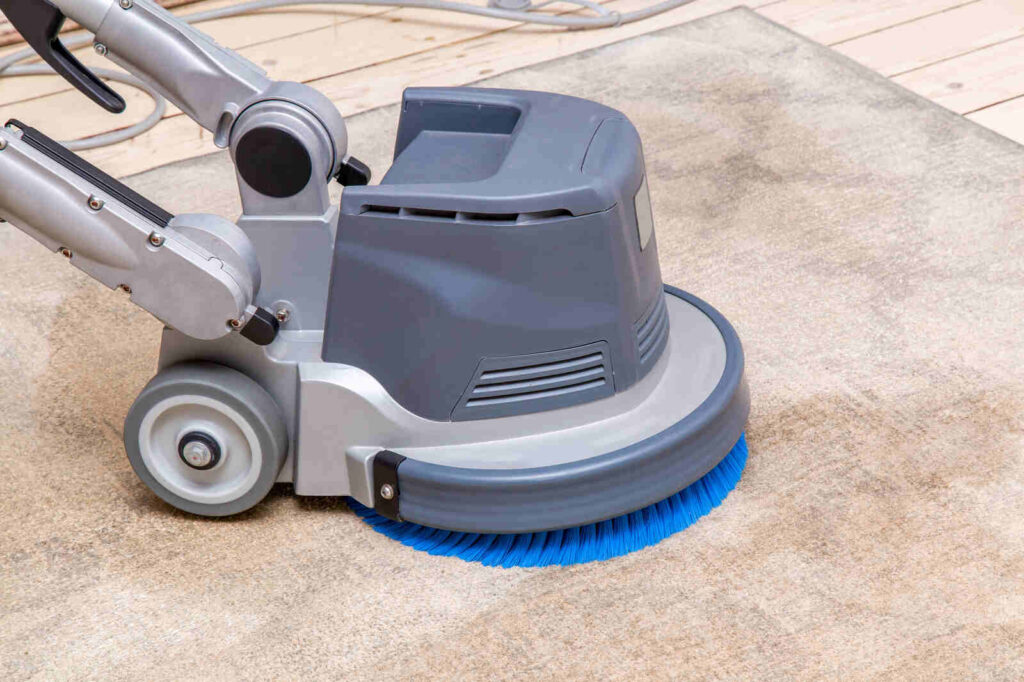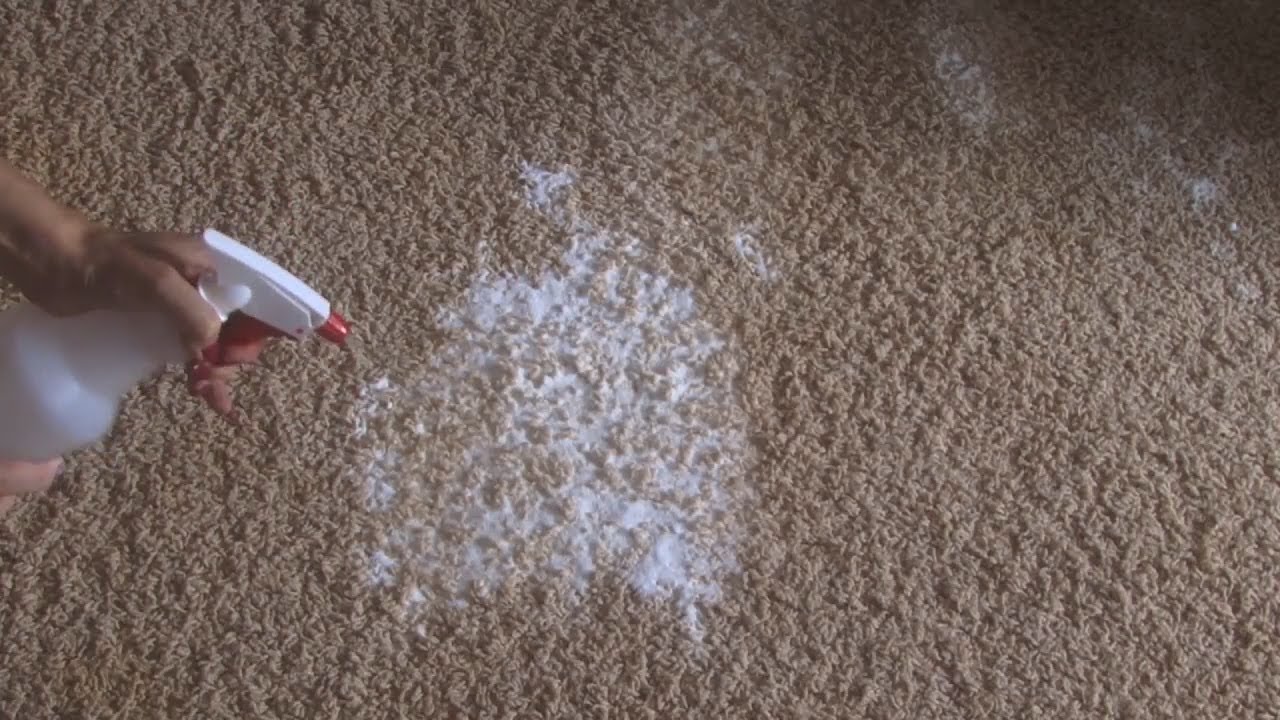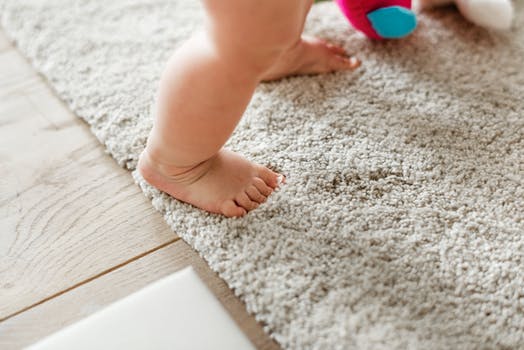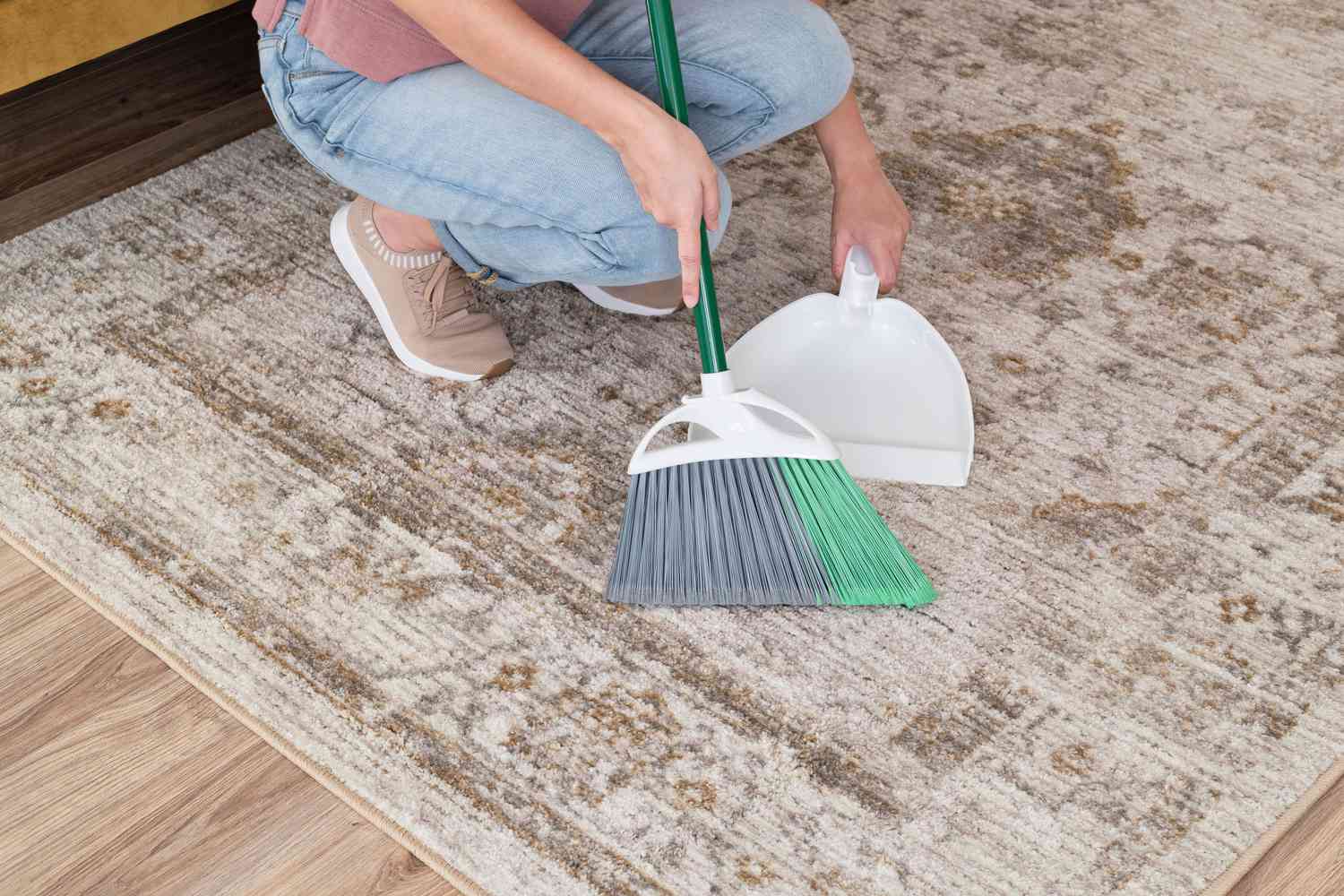Cleaning a rug at home without a machine is possible. You only need some basic tools and techniques.
Rugs can accumulate dust, stains, and odors over time. Machine cleaning is not always an option, especially for delicate or vintage rugs. Luckily, you can achieve a fresh, clean rug using simple household items. In this guide, you will learn effective methods to clean your rug without the need for a machine.
This approach saves money and avoids the risk of damaging your rug with heavy machinery. Ready to transform your rug? Let’s get started with these easy and practical steps.

Choosing The Right Rug
Cleaning your rug at home without a machine can be a daunting task. But with the right approach and proper tools, it can be manageable. A crucial step in this process is choosing the right rug. This choice impacts the cleaning method and the effort required. Here’s how to choose the ideal rug for easy maintenance.
To Get The Best Rug Cleaning Service – Click Here
Material Matters
Different rug materials need different cleaning methods. Some materials are easier to clean than others. Knowing your rug’s material is the first step.
Common rug materials include:
- Wool: Durable and resistant to dirt. Needs gentle cleaning.
- Cotton: Easy to clean. Can handle more aggressive scrubbing.
- Silk: Delicate and luxurious. Requires special care.
- Synthetic: Stain-resistant and easy to clean. Ideal for busy homes.
- Jute: Natural and eco-friendly. Needs careful cleaning to avoid damage.
Here’s a quick comparison table to help you decide:
| Material | Durability | Ease of Cleaning |
| Wool | High | Medium |
| Cotton | Medium | High |
| Silk | Low | Low |
| Synthetic | High | High |
| Jute | Medium | Low |
Choosing a rug with a material that matches your cleaning ability and lifestyle is key. A wool or synthetic rug might be best for high-traffic areas. Silk rugs, while beautiful, are better suited for low-traffic areas.
Size Considerations
The size of your rug also affects its cleaning process. Larger rugs can be more challenging to clean without a machine. Smaller rugs are easier to handle.
Consider these points when choosing the size:
- Room Size: A rug should fit your room’s dimensions. It shouldn’t cover the entire floor.
- Purpose: Choose a rug size based on its function. Small rugs are perfect for accent areas. Larger rugs are better for living rooms.
- Cleaning: A smaller rug is easier to clean by hand. You can move and handle it without much effort.
Here’s a quick guide to rug sizes and their suitability:
| Rug Size | Best For | Cleaning Ease |
| 2×3 feet | Entryways, Bathrooms | High |
| 5×8 feet | Living Rooms, Bedrooms | Medium |
| 8×10 feet | Large Living Rooms | Low |
| 9×12 feet | Dining Rooms | Low |
A smaller rug can be taken outside for a good shake. A larger rug might require spot cleaning while laid out on the floor. Keep these factors in mind to ensure easy and effective rug cleaning at home.
Gathering Cleaning Supplies
Cleaning a rug at home without a machine can seem challenging. But with the right supplies, it’s quite simple. First, gather all your cleaning supplies. This step ensures you are prepared and the cleaning process runs smoothly. Below, we will discuss the essential tools and natural cleaners you will need.
Essential Tools
Having the right tools makes the job easier and more effective. Here are the essential tools you will need:
- Broom and Dustpan: For sweeping off loose dirt and debris.
- Vacuum Cleaner: If available, use it to remove dust before deep cleaning.
- Soft-Bristle Brush: Gently scrubs the rug without damaging its fibers.
- Bucket: Holds water and cleaning solution.
- Sponges: Useful for applying and scrubbing the cleaning solution.
- Old Towels or Rags: For blotting and drying the rug.
- Squeegee: Helps remove excess water after cleaning.
Organize these tools in one place before starting. This ensures you won’t waste time looking for items during the process. Below is a table summarizing the tools and their uses:
| Tool | Purpose |
| Broom and Dustpan | Sweep off dirt and debris |
| Vacuum Cleaner | Remove surface dust |
| Soft-Bristle Brush | Scrub the rug gently |
| Bucket | Hold water and cleaner |
| Sponges | Apply and scrub solution |
| Old Towels or Rags | Blot and dry the rug |
| Squeegee | Remove excess water |
Natural Cleaners
Natural cleaners are safe for your rug and the environment. They are also easy to find and use. Here are some effective natural cleaning solutions:
- White Vinegar: Mix one part vinegar with three parts water. This solution helps remove stains and odors.
- Baking Soda: Sprinkle it over the rug. Let it sit for a few hours to absorb odors, then vacuum it up.
- Lemon Juice: Combine lemon juice with water. This mixture helps brighten the rug and remove stains.
- Salt: Mix salt with vinegar to create a paste. Apply it to stains and let it sit before scrubbing.
- Essential Oils: Add a few drops to your cleaning solution for a fresh scent.
Below is a table summarizing the natural cleaners and their purposes:
To Get The Best Rug Cleaning Service – Click Here
| Cleaner | Purpose |
| White Vinegar | Remove stains and odors |
| Baking Soda | Absorb odors |
| Lemon Juice | Brighten and remove stains |
| Salt | Scrub stains |
| Essential Oils | Add fresh scent |
Using natural cleaners is a great way to keep your rug fresh and clean without harsh chemicals. Gather these items before starting your cleaning process.
Preparing The Rug
Cleaning a rug at home without a machine can seem challenging. But with the right steps, it can be straightforward. Preparing the rug is the first and crucial step. Proper preparation ensures effective cleaning and prevents damage.
Shake And Vacuum
Before diving into deep cleaning, it’s essential to remove loose dirt and debris from your rug. Begin by taking the rug outside and giving it a good shake. This helps to dislodge any particles trapped in the fibers.
Next, use a vacuum cleaner to remove the remaining dust and dirt. Follow these steps:
- Lay the rug flat on a clean surface.
- Vacuum one side thoroughly, focusing on high-traffic areas.
- Flip the rug over and vacuum the other side.
For large rugs, use a vacuum with a beater bar or rotating brush. This will help to lift dirt more effectively. If you have a smaller rug, a handheld vacuum can be more manageable.
Here’s a quick comparison table for vacuuming tips:
| Rug Size | Vacuum Type | Tips |
| Small | Handheld Vacuum | Easy to maneuver, focus on corners |
| Medium to Large | Upright Vacuum with Beater Bar | Use slow, overlapping strokes |
Spot Testing
Spot testing is vital before applying any cleaning solution to your rug. This step helps to ensure that the cleaning product will not damage or discolor the rug fibers.
Follow these simple steps for spot testing:
- Choose a small, hidden area of the rug.
- Apply a small amount of the cleaning solution.
- Wait for 15 minutes to see if there is any reaction.
If there is no discoloration or damage, it is safe to use the cleaning solution on the entire rug. If the spot shows any signs of damage, choose a different cleaning product. Always read the labels on cleaning products to ensure they are suitable for your rug type.
Here’s a quick checklist for spot testing:
- Pick a hidden spot on the rug.
- Apply the cleaner sparingly.
- Wait and observe for any changes.
Spot testing may seem like an extra step, but it can save your rug from potential damage. Being cautious ensures that your rug stays vibrant and intact.

Basic Cleaning Techniques
Keeping your rug clean without a machine can be quite manageable with the right techniques. This guide will walk you through some basic cleaning methods to maintain a fresh and clean rug. Whether you prefer dry or wet cleaning, these methods will help you keep your rug in top shape with minimal effort.
To Get The Best Rug Cleaning Service – Click Here
Dry Cleaning Method
The dry cleaning method is great for regular maintenance and minor stains. It involves minimal moisture, making it ideal for delicate or antique rugs. Here’s how you can clean your rug using this method:
- Vacuuming: Start by vacuuming the rug thoroughly to remove loose dirt and dust. Make sure to vacuum both sides if possible.
- Baking Soda: Sprinkle a generous amount of baking soda over the rug. Baking soda helps to neutralize odors and loosen dirt.
- Brushing: Use a soft-bristled brush to work the baking soda into the rug fibers. Brush gently to avoid damaging the fibers.
- Let it Sit: Allow the baking soda to sit on the rug for at least 15-20 minutes. This gives it time to absorb odors and dirt.
- Vacuum Again: Vacuum the rug again to remove the baking soda and the absorbed dirt. Make sure to vacuum thoroughly to get all the powder out.
For rugs that are not heavily soiled, this method can be very effective. It’s a quick and simple way to keep your rug looking fresh between deeper cleanings.
Wet Cleaning Method
For deeper cleaning, especially for stains and spills, the wet cleaning method is more effective. This method uses water and cleaning solutions to thoroughly clean the rug. Here’s a step-by-step guide:
- Spot Test: Before you start, do a spot test on a small, hidden area of the rug to ensure the cleaning solution doesn’t damage or discolor the fabric.
- Mix Solution: In a bucket, mix a mild detergent with warm water. Avoid using too much detergent as it can be hard to rinse out completely.
- Blot Stains: Dip a clean cloth into the solution and gently blot the stained areas. Do not rub as this can push the stain deeper into the fibers.
- Scrub Gently: For more stubborn stains, use a soft brush to gently scrub the area. Work in small sections to avoid spreading the stain.
- Rinse: Use a clean cloth dipped in plain water to rinse the area. Make sure to remove all soap residue, as it can attract dirt if left in the rug.
- Dry: Blot the wet areas with a dry towel to remove excess moisture. Then, let the rug air dry completely before using it again. Avoid direct sunlight as it can cause fading.
These steps ensure your rug is clean and free from any dirt or stains. Remember, patience and gentle handling are key to preserving the quality of your rug during the cleaning process.
Stain Removal Tips
Cleaning a rug at home without a machine may seem daunting, but it’s possible with the right techniques. Stain removal is a crucial part of this process. Knowing how to tackle various stains can save your rug and keep it looking fresh. Here are some effective stain removal tips.
To Get The Best Rug Cleaning Service – Click Here
Common Stains
Rugs can get stained from many sources. Here are some common stains and how to address them:
- Food and Drink Spills: These are common in dining areas. Wine, coffee, and juice can leave noticeable marks.
- Pet Stains: Pets can leave urine, feces, or vomit stains. These are not only unsightly but can also cause odors.
- Ink and Marker: Ink from pens or markers can be tough to remove. These stains are often found in homes with children.
- Grease and Oil: These stains come from cooking or mechanical work. They can be tricky due to their slippery nature.
- Mud and Dirt: Mud tracked in from outside can dry and leave crusty patches on your rug.
For each type of stain, it’s important to act quickly. The longer a stain sits, the harder it is to remove. Blotting the stain instead of rubbing it can prevent it from spreading.
Homemade Solutions
Many household items can effectively remove stains from rugs. Here are some homemade solutions:
- Vinegar and Baking Soda: Mix equal parts vinegar and water. Spray it on the stain and sprinkle baking soda on top. Let it sit, then blot with a clean cloth.
- Dish Soap and Water: Mix a few drops of dish soap with warm water. Apply it to the stain using a sponge. Blot gently and rinse with clean water.
- Hydrogen Peroxide: For tough stains, mix hydrogen peroxide with a bit of dish soap. Apply to the stain, let it sit for a few minutes, then blot.
- Salt: For liquid spills, sprinkle salt on the stain. Let it absorb the liquid, then vacuum it up.
These homemade solutions are effective and safe. They use items you likely already have at home. Always test a small, hidden area of the rug first to ensure no damage or discoloration.

Dealing With Odors
Cleaning a rug at home without a machine can be challenging. One of the biggest issues is dealing with odors. Whether from pets, spills, or just everyday use, rugs can start to smell over time. Thankfully, there are simple and effective ways to tackle these odors using items you likely already have at home.
Baking Soda Trick
Baking soda is a powerful and natural deodorizer. It’s safe to use on most rugs and can help neutralize bad smells. Here’s how you can use the baking soda trick to freshen up your rug:
- Step 1: Vacuum the rug thoroughly to remove loose dirt and debris.
- Step 2: Sprinkle a generous amount of baking soda evenly over the entire rug.
- Step 3: Let the baking soda sit for several hours, or overnight if possible. The longer it sits, the better it absorbs the odors.
- Step 4: Vacuum the rug again to remove the baking soda.
Repeat this process if necessary, especially for strong odors. Baking soda not only helps in absorbing smells but also in removing moisture, which can sometimes be the cause of odors.
Here’s a quick reference table:
| Step | Action |
| 1 | Vacuum the rug |
| 2 | Sprinkle baking soda |
| 3 | Let it sit |
| 4 | Vacuum again |
Vinegar Solution
Vinegar is another natural cleaning agent that works well on rugs. It has antibacterial properties and can help eliminate odors. Here’s how you can use vinegar to clean your rug:
- Step 1: Mix equal parts of white vinegar and water in a spray bottle.
- Step 2: Lightly spray the solution onto the rug. Do not soak the rug, as too much moisture can damage it.
- Step 3: Use a soft brush or cloth to gently scrub the area. This will help lift any dirt and odors.
- Step 4: Let the rug air dry completely. Ensure the area is well-ventilated to speed up the drying process.
Vinegar not only helps in removing odors but also disinfects the rug. Here’s a quick reference for using vinegar solution:
| Step | Action |
| 1 | Mix vinegar and water |
| 2 | Spray the solution |
| 3 | Scrub gently |
| 4 | Air dry the rug |
Using these simple methods, you can easily deal with odors on your rug without needing a machine. Both baking soda and vinegar are effective, affordable, and safe for most types of rugs.
Drying The Rug
Cleaning a rug at home without a machine can be a rewarding task. But the job isn’t finished until the rug is properly dried. Drying the rug is crucial to prevent mold and mildew. Let’s explore the best methods for drying your rug at home.
Air Drying
Air drying is a simple and effective way to dry a rug. It doesn’t require any special tools and is environmentally friendly. Here are some steps to follow:
- Find a suitable place: Choose a well-ventilated area, either indoors or outdoors. A porch or a garage is ideal.
- Ensure good airflow: Use fans to increase air circulation. This helps the rug dry faster.
- Hang the rug: If possible, hang the rug on a clothesline or over a railing. This allows air to reach all sides.
- Check periodically: Turn the rug every few hours. This ensures even drying and prevents damp spots.
Here’s a simple table that summarizes the steps:
| Step | Action |
| 1 | Find a suitable place |
| 2 | Ensure good airflow |
| 3 | Hang the rug |
| 4 | Check periodically |
Air drying is a safe and effective method. It preserves the rug’s fibers and maintains its quality.
Avoiding Sunlight
Direct sunlight can be harmful to rugs. It can cause colors to fade and fibers to weaken. Here’s how to dry your rug without exposing it to sunlight:
- Choose a shaded area: Pick a spot that is protected from direct sun. Under a tree or a covered porch works well.
- Use indoor spaces: Drying indoors can be a good option. Use a well-ventilated room with fans to help with drying.
- Dry gradually: Allow the rug to dry slowly. Rapid drying can damage the fibers.
- Monitor the rug: Check the rug regularly for dampness. Move it if necessary to ensure even drying.
Below is a table that highlights the key points:
| Tip | Explanation |
| Choose a shaded area | Avoid direct sun |
| Use indoor spaces | Well-ventilated rooms with fans |
| Dry gradually | Prevent fiber damage |
| Monitor the rug | Ensure even drying |
By avoiding sunlight, you protect your rug’s color and structure. This method ensures the rug remains beautiful and durable for years.
Regular Maintenance
Keeping your rug clean without a machine can seem challenging, but with the right regular maintenance, your rug can stay fresh and vibrant. Regular maintenance involves routine cleaning and preventive measures that help maintain the rug’s condition. These steps ensure that your rug remains an attractive part of your home décor.
Routine Cleaning
Routine cleaning is essential for keeping your rug in good condition. Here are some simple steps to follow:
- Vacuum regularly: Use a vacuum cleaner without a rotating brush to gently remove dust and dirt.
- Spot clean: Quickly address spills by blotting with a clean cloth and mild detergent.
- Shake the rug: Take the rug outside and give it a good shake to remove loose dirt.
- Brush the rug: Use a soft-bristle brush to gently remove pet hair and crumbs.
In addition to these steps, consider the following table to help you maintain your rug’s cleanliness:
| Task | Frequency |
| Vacuuming | Weekly |
| Spot Cleaning | As needed |
| Shaking the Rug | Monthly |
| Brushing | Bi-weekly |
By following these routine cleaning steps, you can ensure that your rug remains clean and free of dirt and stains.
Preventive Measures
Preventive measures are equally important in maintaining the cleanliness of your rug. Here are some effective strategies:
- Use doormats: Place doormats at entrances to catch dirt before it reaches your rug.
- Remove shoes: Encourage a no-shoes policy to reduce dirt and stains.
- Rug pads: Use rug pads to prevent slipping and reduce wear and tear.
- Rotate the rug: Rotate your rug every few months to ensure even wear.
- Keep pets clean: Regularly groom pets to reduce shedding and dirt.
Implementing these preventive measures can significantly extend the life of your rug. Consider the following points for additional tips:
- Sunlight exposure: Protect the rug from direct sunlight to prevent fading.
- Furniture pads: Place furniture pads under heavy furniture to avoid indentations.
- Regular inspections: Check the rug for signs of wear or damage and address them promptly.
By taking these preventive measures, you can keep your rug looking new and clean for a long time.
When To Seek Professional Help
Cleaning a rug at home without a machine can be a simple task for minor stains and regular maintenance. But there are times when you need to seek professional help. This is crucial to ensure your rug remains in good condition and lasts for years. Knowing when to call in the experts can save you time and prevent further damage to your valuable rug.
To Get The Best Rug Cleaning Service – Click Here
Severe Damage
Sometimes, your rug might suffer from severe damage that can’t be fixed with home cleaning methods. This could include:
- Large, stubborn stains
- Extensive water damage
- Burn marks
- Tears or rips
These types of damage require specialized tools and expertise. Professionals can assess the damage and determine the best course of action. They have the right equipment to handle tough stains and repair structural damage.
For example, water damage can cause mold and mildew. This not only ruins the rug but also poses health risks. Professional cleaners use industrial-strength dehumidifiers and specialized cleaning solutions. This ensures the rug is thoroughly cleaned and dried.
In cases of burn marks or tears, rug repair experts can restore the fibers. They match the original material and weave patterns, making the damage almost invisible. This level of detail ensures your rug looks as good as new.
Here is a quick comparison of home cleaning vs. professional services for severe damage:
| Home Cleaning | Professional Services |
| Basic stain removal | Advanced stain treatment |
| Surface cleaning | Deep cleaning |
| No structural repairs | Expert repair work |
Specialized Cleaning
Some rugs require specialized cleaning that goes beyond basic home methods. This includes:
- Antique rugs
- Silk or wool rugs
- Handmade or intricately woven rugs
- Rugs with delicate dyes
Professional cleaners understand the specific needs of these types of rugs. They use gentle, non-abrasive cleaning solutions that won’t damage the fibers. For antique and handmade rugs, the cleaning process is more delicate. Experts ensure every step is done with care.
Silk and wool rugs need special attention because of their natural fibers. Professionals use pH-balanced cleaners to maintain the integrity of the materials. They also take steps to prevent color fading or bleeding. This is essential for rugs with intricate patterns and vibrant colors.
In addition to cleaning, professionals can offer treatments to protect your rug. These include stain-resistant coatings and mothproofing. These treatments extend the life of your rug and keep it looking its best.
Here’s a quick look at the benefits of specialized cleaning:
- Preserves the rug’s original beauty
- Maintains the value of antique and handmade rugs
- Uses safe and effective cleaning solutions
- Provides protective treatments
Specialized cleaning ensures your rug receives the best care possible. It goes beyond what you can achieve with home cleaning methods.
Eco-friendly Practices
Cleaning a rug at home without a machine can be a simple and eco-friendly process. By using sustainable practices, you can keep your rug clean and fresh without harming the environment. Let’s dive into some eco-friendly practices that will help you achieve this.
Sustainable Cleaners
Using sustainable cleaners is one of the best ways to ensure your rug cleaning process is eco-friendly. There are various natural ingredients you can use that are both effective and safe for the environment. Here are some options:
- Baking Soda: Great for deodorizing your rug. Simply sprinkle it on the rug, let it sit for a few hours, and then brush it off.
- White Vinegar: Perfect for removing stains. Mix one part vinegar with two parts water, spray on the stain, and blot with a clean cloth.
- Lemon Juice: Works well for removing odors and stains. Mix it with water and apply it to the rug.
- Castile Soap: A gentle soap that’s effective for cleaning. Mix a small amount with water and use it to scrub the rug.
These ingredients are not only effective but also gentle on the environment. You can also create a cleaning solution by combining some of these items:
| Ingredient | Purpose |
| Baking Soda | Deodorizing |
| White Vinegar | Stain Removal |
| Lemon Juice | Odor Removal |
| Castile Soap | General Cleaning |
Mixing these ingredients in different proportions can help you tackle various cleaning challenges. Remember to always test a small area of your rug first to ensure the solution does not cause any damage.
Disposing Responsibly
Disposing of waste responsibly is crucial to maintaining an eco-friendly cleaning process. After cleaning your rug, you may have leftover cleaning solutions or waste materials. Here are some tips for responsible disposal:
- Recycle Containers: If you used any containers or bottles for your cleaning solutions, make sure to recycle them according to your local recycling guidelines.
- Compost Organic Waste: Any organic waste, such as lemon peels or leftover baking soda, can be added to your compost bin.
- Avoid Harsh Chemicals: If you used natural cleaners, you won’t have to worry about disposing of harmful chemicals. Always avoid using harsh chemicals that can contaminate water sources.
In addition to these tips, consider the impact of water usage:
| Action | Eco-Friendly Practice |
| Rinsing | Use a bucket instead of running water |
| Drying | Air dry outside |
By following these practices, you can ensure that your rug cleaning process is not only effective but also kind to the environment. Small changes in your cleaning routine can make a significant impact on reducing waste and conserving resources.

Frequently Asked Questions
How Do You Clean A Rug By Hand?
To clean a rug by hand, first vacuum thoroughly. Then, mix mild detergent with water, scrub gently with a soft brush, and rinse.
Can Baking Soda Clean A Rug?
Yes, baking soda can clean a rug. Sprinkle it on, let it sit for 15 minutes, then vacuum.
What Household Items Clean A Rug?
Household items like vinegar, baking soda, and mild dish soap can clean a rug effectively and safely.
How Often Should You Clean A Rug?
You should clean a rug every 6-12 months. High-traffic areas may require more frequent cleaning.
Conclusion
Cleaning a rug at home without a machine is easy. Follow these steps to keep your rug fresh. Use simple tools like a brush and mild detergent. Regular maintenance helps extend the life of your rug. Spot cleaning is effective for immediate stains.
A clean rug enhances your home’s appearance. Now, you can enjoy a clean and cozy rug effortlessly. Try these tips and see the difference. Happy cleaning!
